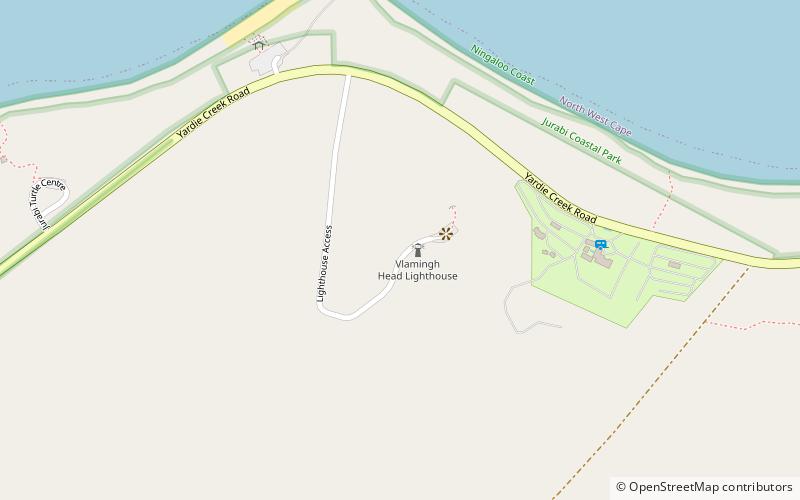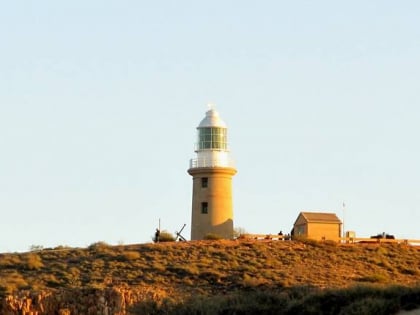Vlamingh Head Lighthouse, Exmouth


Facts and practical information
Perched upon the rugged cliffs of North West Cape in Exmouth, Australia, the Vlamingh Head Lighthouse stands as a sentinel over the Indian Ocean, offering sweeping views and a glimpse into maritime history. This historic lighthouse, an essential beacon for ships navigating the treacherous waters off the coast of Western Australia, has been guiding vessels safely since its commissioning in 1912.
Constructed to enhance maritime safety following the wreck of the SS Mildura, the lighthouse is named after the Dutch sea captain Willem de Vlamingh, who explored the area in the late 17th century. The lighthouse reaches a modest height, but its elevated position on the headland provides an extensive vantage point for visitors looking out to sea or gazing inland across the Cape Range landscape.
The lighthouse itself is a picturesque, white-washed structure, crowned with a lantern room that once housed the beacon's illuminating apparatus. Although the lighthouse is no longer in active service, having been replaced by more modern navigational aids, it remains an iconic landmark and a testament to the region's maritime heritage.
Tourists visiting Vlamingh Head Lighthouse can enjoy the panoramic vistas and perhaps catch a glimpse of migrating whales or the stunning Western Australian sunset. The site is also an excellent spot for photography enthusiasts, who can capture the rugged beauty of the coastline and the historic charm of the lighthouse itself.
Access to the lighthouse is straightforward, with parking available nearby. While the interior of the lighthouse is not open to the public, the surrounding area offers ample opportunity for exploration and relaxation. Interpretative signage provides information about the lighthouse's history and the natural environment, making the visit both educational and enjoyable.
